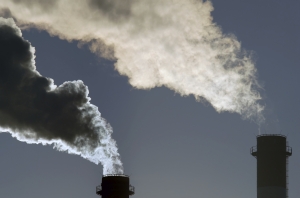Following the release of its indicative target to reduce emissions by 45 per cent on 2005 levels by 2030, the Australian Labor Party (ALP) is expected to provide further detail on its proposed Emissions Trading Scheme (ETS) policy in the new year. The new ETS will be designed to achieve a range of climate and renewables policy objectives, including the ALP’s final 2025 and 2030 emissions reduction targets and a long term goal to derive 50 per cent of electricity from renewable energy.
In this Market Update, we examine the design of the ALP’s proposed ETS policy, including the lessons learned from the former Carbon Price Mechanism (CPM), policy objectives and the expected design features of the new scheme.
While the ALP will utilise the former CPM as a starting point, its updated framework will look very different. The new ETS is expected to be underpinned by a “soft start” first phase, rather than any fixed price period, with gradual compliance obligations likely to be imposed on liable entities prior to 2020, ahead of a more ambitious Phase II from 2020.
In order to ensure low cost compliance costs, the scheme may utilise both international units and low-cost “efficiency” ACCUs drawn from current emissions reduction methodologies. These “low-cost ACCUs” may be utilised in Phase I, displacing the immediate need for international units to be used ‘without restriction’ in the local market. Critically, this is expected to facilitate low compliance costs, while ensuring that control of domestic policy – and the local carbon price – is not immediately lost to international stakeholders such as the United Nations (CDM) or the European Parliament (EU ETS), with both markets continuing to navigate their own policy shortcomings.
In addition to a soft start design, the ALP is expected to propose separate caps on the electricity and industrial sectors, with a “closed system” emissions intensity baseline scheme (EIBS) likely to be developed for the electricity sector, operating in parallel to a broad-based ETS for the industrial sectors, encompassing “full” and “partially” emissions-intensive trade-exposed (EITE) activities.
This may facilitate a “two-speed market” to be developed after 2020, designed to achieve a range of policy objectives, including the transition of the electricity generation, coal mining, and land-use sectors to a clean energy economy through investment in domestic (and international) offsets, and the take-up of renewable electricity in line with the ALP’s stated 50 per cent goal by 2030.
Learn More
This report is published under RepuTex’s Carbon Market Intelligence service, providing detailed analysis, supply and pricing information on the Emissions Reduction Fund, the Safeguard compliance market, Australia’s post-2020 target and policy developments, including the ALP’s proposed Emissions Trading Scheme.
To learn more about this report, please click here.















